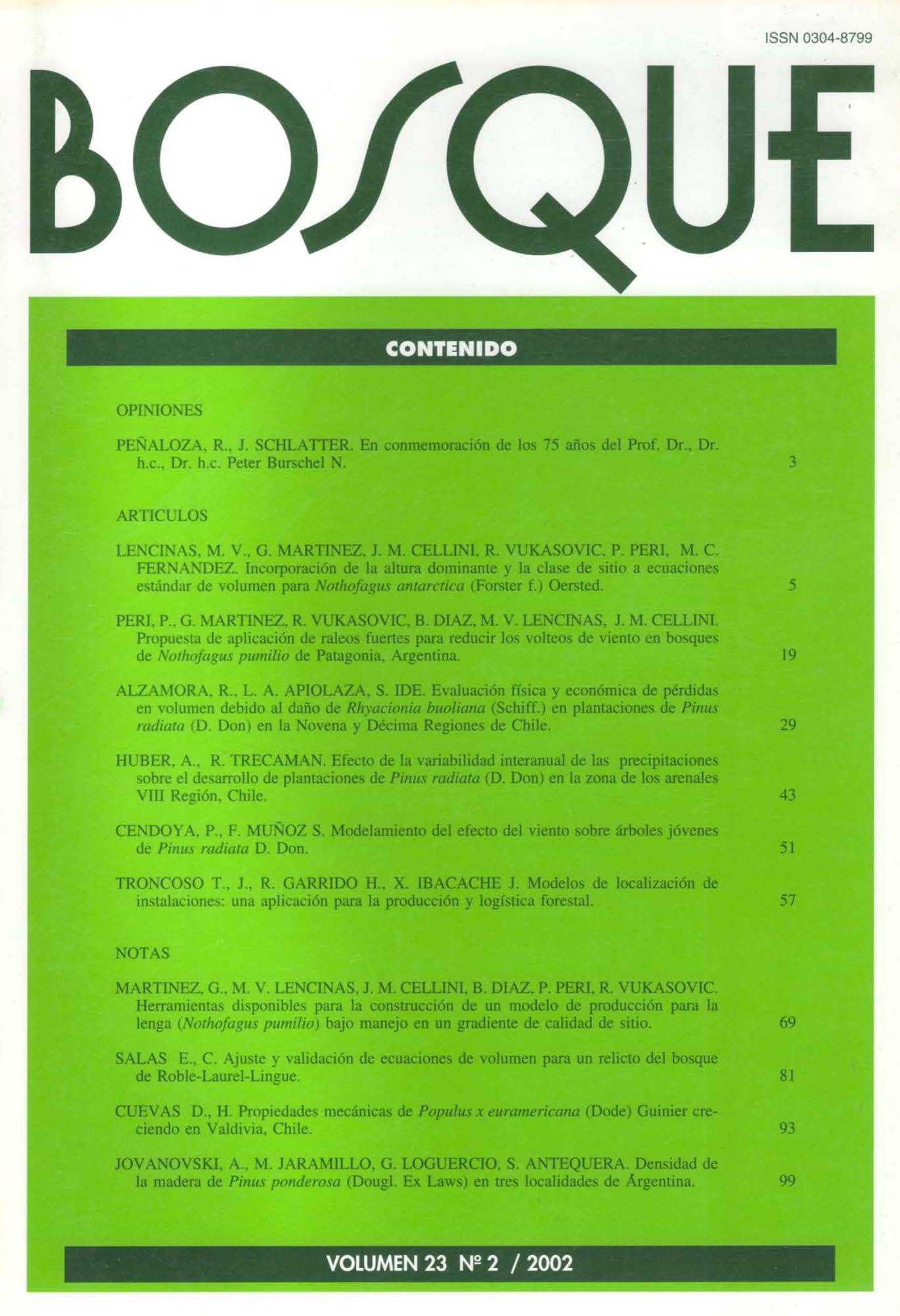Propuesta de aplicación de raleos fuertes para reducir los volteos de viento en bosques de Nothofagus pumilio de Patagonia, Argentina
Contenido principal del artículo
Resumen
En este trabajo se propone y analiza un método de raleo para reducir el riesgo de volteos por viento en bosques jóvenes de lenga (Nothofagus pumilio) en un sitio de alta calidad (IS60= 23,2 m). Los raleos se llevaron a cabo en un bosque puro y coetáneo de 67 años (edad al DAP), efectuándose las primeras intervenciones en 1996. Este método propone raleos sucesivos por lo bajo para mantener la estabilidad del rodal, a través de reducciones sucesivas de la densidad de copas y el crecimiento paulatino de los árboles remanentes seleccionados (árboles meta). El sistema se lleva a cabo en cinco etapas sucesivas (anillado del 50% de los árboles no seleccionados al año cero; extracción de los árboles anillados y anillado del restante 50% al año 3; extracción de los árboles anillados y anillado de los árboles padres remanentes al año 6; y extracción de los árboles padres al año 10). En el ensayo se definieron dos niveles de raleo a lo largo de dos hectáreas: un raleo suave con 872 ind/ha y un raleo fuerte con 489 ind/ha. A lo largo de las mismas se establecieron 6 parcelas permanentes, mientras que en sectores no raleados se establecieron 4 parcelas testigo. Anualmente se registraron los crecimientos en diámetro, área basal y volumen total, así como la mortalidad y la dinámica de copas en los tratamientos testigo. Por otra parte, los rendimientos de los productos de la primera intervención (año 3) fueron medidos y discriminados según tipo de productos. Los resultados de los primeros seis años de intervención de esta propuesta de raleo presentan altos crecimientos y rendimientos, evitando la apertura brusca del dosel que puede poner en peligro al rodal frente a un volteo de viento.

